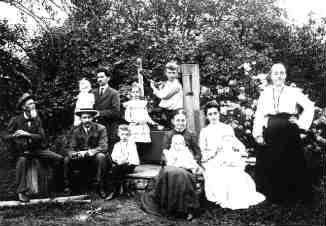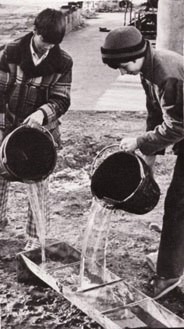
Photo by Jerry Wisler |
In Perkasie and surrounding communities during the late 1800's and early 1900's most of the area was farm land. Children of farmers were responsible for assisting in the farm work. by pumping water, planting and harvesting, feeding animals, preserving, processing, and canning food, and many other farm tasks. These jobs were completed manually or with the assistance of horse power. With the industrial revolution in the late 1800's farmers began to use mechanical equipment which helped to reduce farming labor. With these machines farming was still a dawn to dusk job. |

